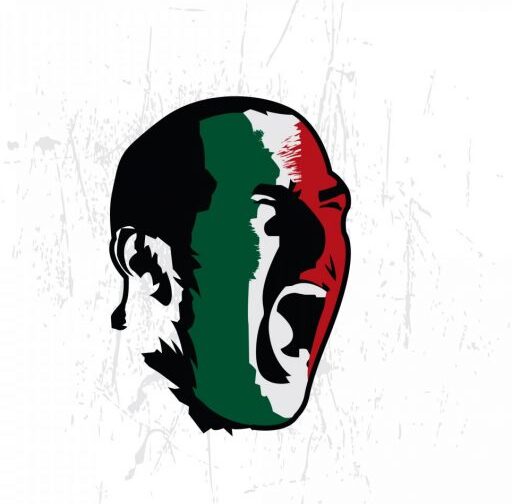Helenio Herrera was born in Buenos Aires on the 10th of April 1910 into a Spanish family in exile in Argentina. He could have succeeded at anything but chose football and became one the greatest coaches of all time.
Herrera is best known for his ‘Grande Inter’ side of 1960’s. Under his command, the Nerazzurri reached unprecedented levels of success, winning three Serie A titles between 1962 and 1966. The Biscione also impressed on the European scene winning the European Cup twice, in 1964 and 1965. He almost led that Inter side to a third European triumph in 1967; only for Celtic to produce a shock in Lisbon with a 2-1 victory.
However, it is not simply Herrera’s success that makes him such an important name in Serie A and the history of football. The Argentine was also an innovator and a game-changer in the field of football management.
He changed people’s perceptions about the role of a coach. Before Herrera, a team’s success was put down solely to its players, coaches were seen as background figures – supervisors of genius.
Consequently, through a combination of factors, Herrera was hailed as the man behind Inter’s domination. That side was known as Herrera’s Inter, not by the name of any its star performers like Di Stefano’s Real Madrid. Herrera was also a pioneer of the team-talk and psychological techniques designed to get the best out of his players; techniques which are integral in the modern game.
On occasion, one could say that he took these theories too far, with some of his enigmatic methods coming under serious scrutiny. For example, Herrera once found out Aristide Guarneri’s father had passed away before a match, with the Argentine choosing to inform Guarneri only after he had played in the match.
But in most respects he was still a man ahead of his time. As well as utilising psychology, he also enforced a strict discipline code, forbidding players to drink or smoke as well as monitoring their diet.
He was a divisive man; many in Italy disliked him, especially in the media. Though his nickname Il Mago – meaning ‘the wizard’ – may sound positive, it was coined by journalists who felt Herrera was performing dark magic through his playing style: Catenaccio.
The ultra-defensive tactic originated from Austrian coach Karl Rappan. He used it with Swiss side Servette, also managing to achieve success winning two Swiss league titles in 1933 and 1934.
Although Herrera was not the inventor of the tactic, his success, especially in Europe, made all of Europe take notice (whether it be with adoration, recognition, or hatred) of this new system. One could even argue that he gave Italy an identity; the ability to see a football match as a battle of ideas, speed of thought, or maybe as a game of chess; to win one must out-think the opponent.
However, like the great defensive managers of contemporary times, such as Jose Mourinho or arguably Diego Simeone, Herrera’s tactic was not just clean cut ‘back’s against the wall’. His version of Catenaccio had slight variations.
His full-backs, particularly the great Giacinto Facchetti, were deployed as wing-backs, in an effort to launch fast counter-attacks.
Moreover, Herrera was not always a strictly defensive coach. He only embraced Catenaccio when he moved to coach Inter.
In his previous posting at Barcelona he displayed his adaptability, like the Blaugrauna managers of today, he embraced an open attacking style. His Barcelona side won two La Liga titles, scoring over 80 goals in both seasons – a feat he never managed to achieve in any of his title winning seasons with Inter.
Herrera moved to Roma in 1968. Big things were expected of the Giallorossi after his move South. However, in three seasons of management, the Lupi only mustered a single Coppa Italia victory.
The former Barcelona man was eventually sacked after he spoke ill of Roma’s first title winning side saying, “This club has not won the championship since 1942 and only did so then because Mussolini was the coach.”
The club subsequently responded in ominous fashion, “Other than being shamefully false, it is a very grave and intolerable offence against the valiant athletes who won that title and also an offence against all the passionate supporters.”
It’s no surprise that his time in the capital soon ended, as he was sacked in 1970.
After the disappointment with the Giallorossi, Herrera was never to win a trophy in Italy again (he did manage one last Copa del Rey with Barcelona in 1981). He eventually passed away in 1997, aged 87.
The Inter legend was by no means perfect. Herrera wasn’t loved by all; indeed many loathed him. However, he was influential and a true pioneer in his era and is undoubtedly a legend of the game.







Very naive and poorly researched article. Catenaccio under Herrera was not “ultra-defensive” even it was a defensively oriented system. For one, Facchetti was the first fullback to bomb forward, you had Jair with his surging runs, Luis Suarez controlling the tempo of play (the first midfielder to win a Ballon D’Or), and two of some of the most talented players in the history of Calcio in Mazzola and Corso. And how are Jose Mourinho’s sides with their “backs against the wall”? You must not have seen his Chelsea side last year, or his time at Real Madrid, or when he led Inter to defeat Guardiola’s Barcelona.
Also, Herrera was not coined “Il Mago” because of his “dark magic”. That is a flatout lie and I don’t have any idea where you got that from. Quite frankly I think you just made it up. He was called that because on occasion he would provocatively announce the results of Sunday’s games and often his prediction turned out to be correct.
You must be an Juventus fan with all the negative connotations you’ve associated with Herrera’s Inter.